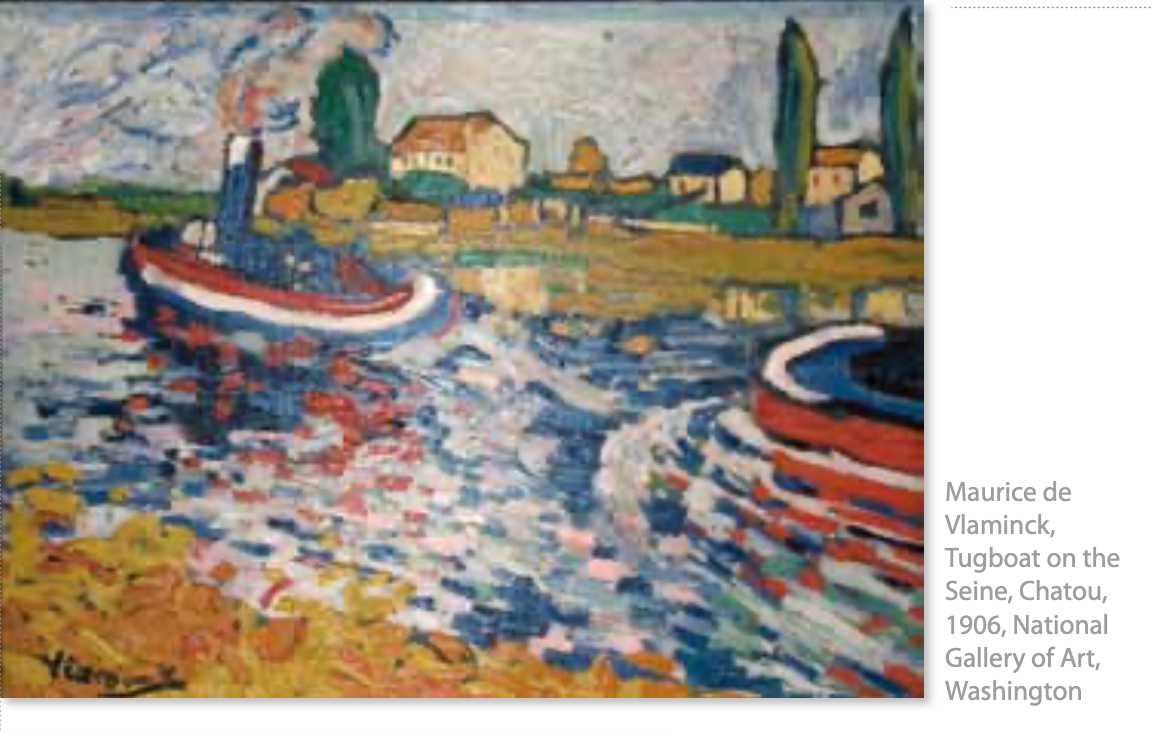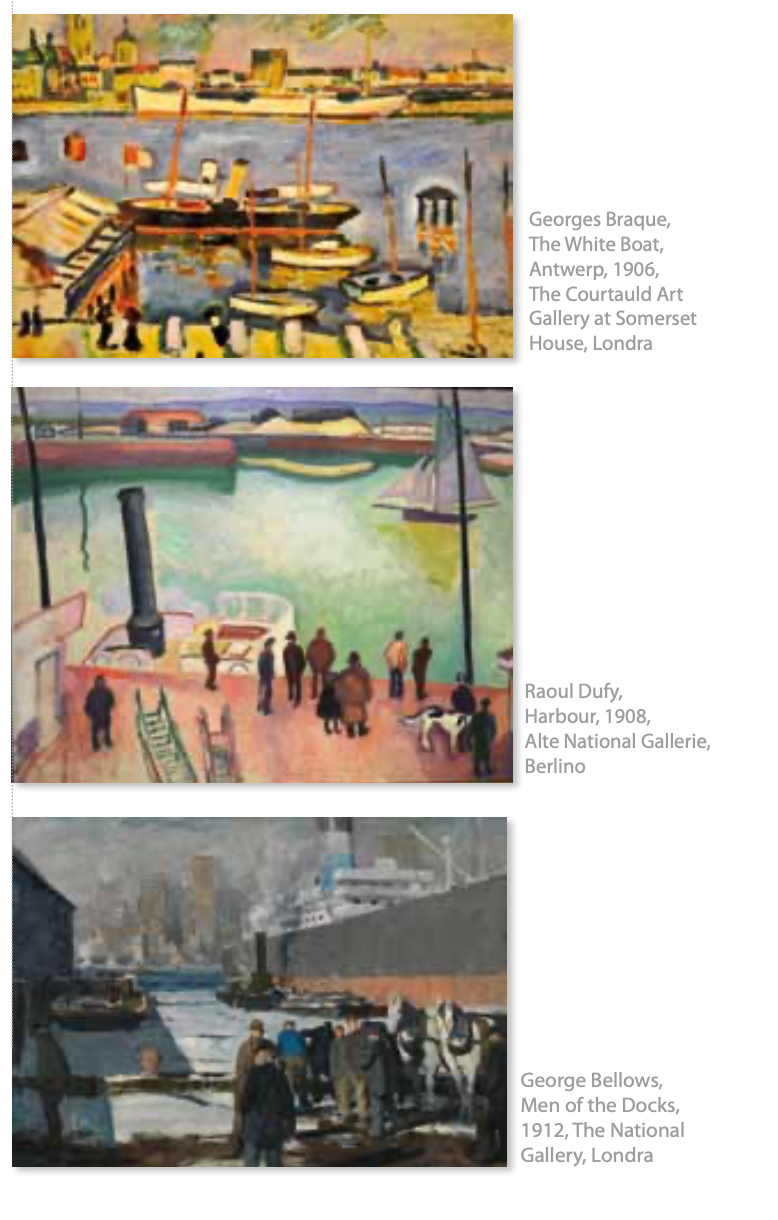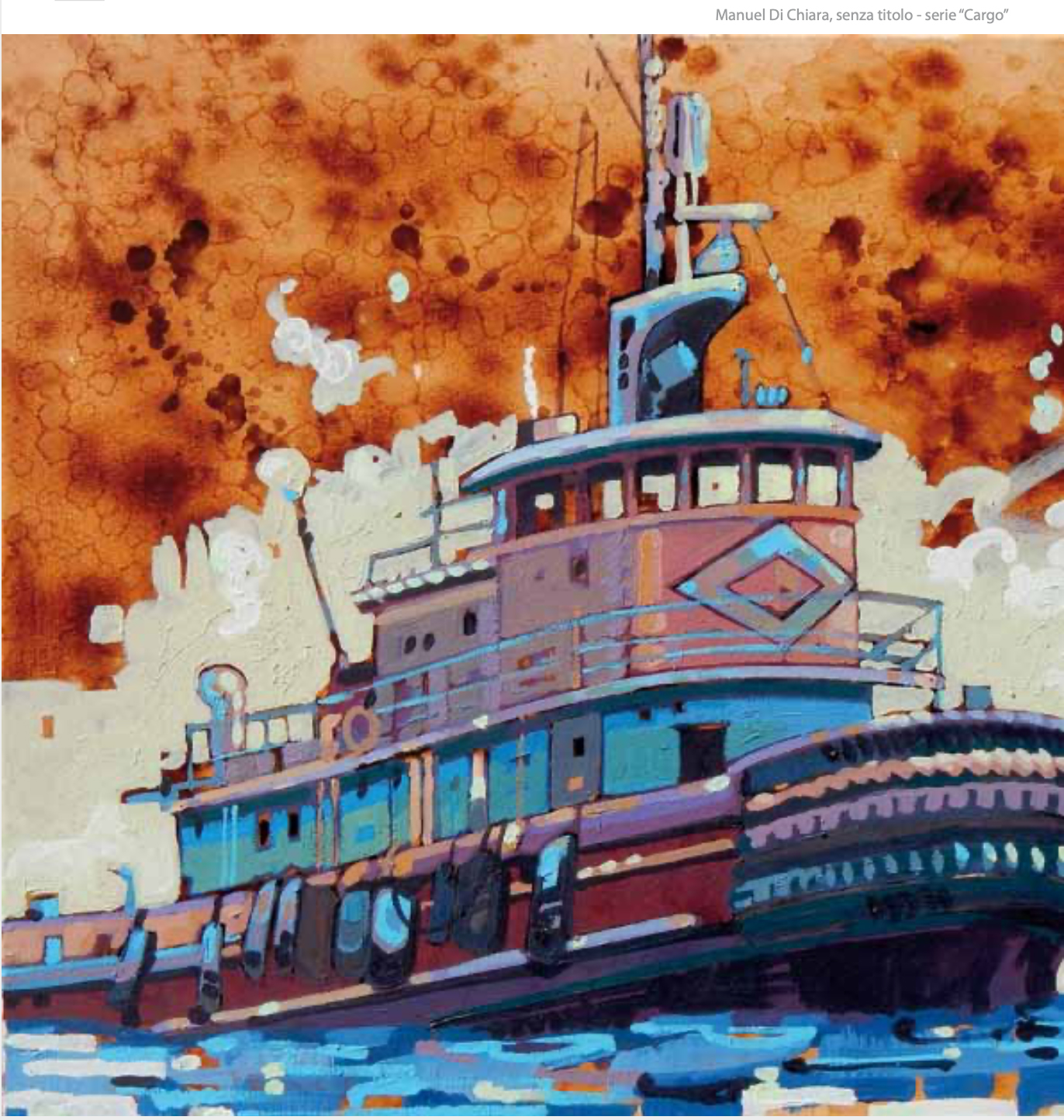FORIO - ISCHIA ISLAND
It has been a closer and not casual encounter of made in Ischia talents, who have in common a unconventional “eye” and, especially, an endless passion for colours (I am thinking about Enzo Rando’s postcards…). The images of the photostory show a piece of their elective affinity I see and which maybe – paradoxically – escape from both of them. That’s it.


 To introduce the discourse on Manuel, I start from a minimal list of works and authors, a must-haves that I went to pick for around the galleries and European museums, and not only, Here is the “White Boat” by George Braque (it is in London), which is coeval (1906) of the Tugboat on the Seine” by Maurice de Vlaminck (in Washington). They are mystical glories of Fauvism which will explode with the incomparable palette by Raoul Dufy (here is his “Harbour” from 1908, which I photographed in Berlin); trespassing in the USA with George Bellows, who I knew for his magistral paintings about boxing, and which impressed me at the National Gallery in London with the “Men of the Docks” in Manhattan (1912).
To introduce the discourse on Manuel, I start from a minimal list of works and authors, a must-haves that I went to pick for around the galleries and European museums, and not only, Here is the “White Boat” by George Braque (it is in London), which is coeval (1906) of the Tugboat on the Seine” by Maurice de Vlaminck (in Washington). They are mystical glories of Fauvism which will explode with the incomparable palette by Raoul Dufy (here is his “Harbour” from 1908, which I photographed in Berlin); trespassing in the USA with George Bellows, who I knew for his magistral paintings about boxing, and which impressed me at the National Gallery in London with the “Men of the Docks” in Manhattan (1912).
Observe the sequence of masterpieces from over a century ago, measure the distances and the convergences, think of the atmospheres, build a narrative, add the persuasive echo of kinetic art, optical art and, of course, Pop Art. Therefore, stop and observe the workers of Manuel, particularly those of the series called “cargo”: at his back I can glimpse those great masters, the digested lessons and the outdated quotes , unwanted, but necessary for the comprehension of an original and contemporary path.
A complex and conscious way of art, Manuel’s one which, by vocation, loves keeping a low profile: he is an illustrator, graphic designer, photographer, interior designer, artisan, multi-material painter , experimenter of materials and very careful to the eco-compatibility; sculptor, designer and much more.
And he is always in search of an active contact with the spectator and/or the client, of a fleeting moment to catch precisely when his work seems to almost change for a details that is never innocuous, exactly when the subject of his art work seems simply a child of Photorealism of Hyperrealism.
Moreover, the fleeting moment is part Manuel’s thematic leit-motif: the “cargo veissel”, the boats, the cranes, the ports, the outer harbour; and the cars, the vespa and the beloved vans, and small three—wheeled cars; more weals, motorcycles and motors. A whole word in motion, even telluric; slow or very fast, almost always devoid of humans, and to stop for a nanosecond before it start moving again.
Last time I wrote about him, a year and a half ago, Manuel was selected among thirty-eight colleagues from every corner of the world to participate in the international competition “romadesignlab”, dedicated to self-produced eco-design, with one his most vibrant pieces, the “ Cardboard Rocking Vespa”. By the way:the cardboard is rigorously recycled and becomes a pictorial support or a piece of furniture, perforated and light, an allegory of a distinctive and concrete pilosophy, without squiggles and frills. I am still convinced, as I wrote at that time, that Manuel Di Chiara expresses an iconographic power that criticizes in a very efficient way the contemporaneity to which, by age, he belongs.
 The modern times are unbearable due to the massive communicative self-refenciality, “green” to talk about, but without collective impulse towards the true safeguard of the planet, or the solidarity for the suffering humanity, which is the same thing. By contrast Manuel “declares” his warm thinking with the technique of material acrylic, with finishing touches of enamel and pastel, or with the very fine ability with which he uses oil on canvas, in an effervescence of colours which is also a hymn to (my) masters I mentioned above. It is fantastic when he lingers in the details, elaborating/piercing the tangible reality, to leave space for the visionary freedom. And when he introduces us to the essential atmospheres of the extended and solitary commercial areas of the port areas, between containers and street lampposts, cranes and chains, outlined by the theatrical backdrop of the large cargo ships that navigate in the background and, look at it, even in my sailor blood; or of the barges apparently still on the Middle-European canals and rivers, in a context of places and views which don’t leave space for the human figures, always mentioned by virtue of their absence.
The modern times are unbearable due to the massive communicative self-refenciality, “green” to talk about, but without collective impulse towards the true safeguard of the planet, or the solidarity for the suffering humanity, which is the same thing. By contrast Manuel “declares” his warm thinking with the technique of material acrylic, with finishing touches of enamel and pastel, or with the very fine ability with which he uses oil on canvas, in an effervescence of colours which is also a hymn to (my) masters I mentioned above. It is fantastic when he lingers in the details, elaborating/piercing the tangible reality, to leave space for the visionary freedom. And when he introduces us to the essential atmospheres of the extended and solitary commercial areas of the port areas, between containers and street lampposts, cranes and chains, outlined by the theatrical backdrop of the large cargo ships that navigate in the background and, look at it, even in my sailor blood; or of the barges apparently still on the Middle-European canals and rivers, in a context of places and views which don’t leave space for the human figures, always mentioned by virtue of their absence.



Comments powered by CComment